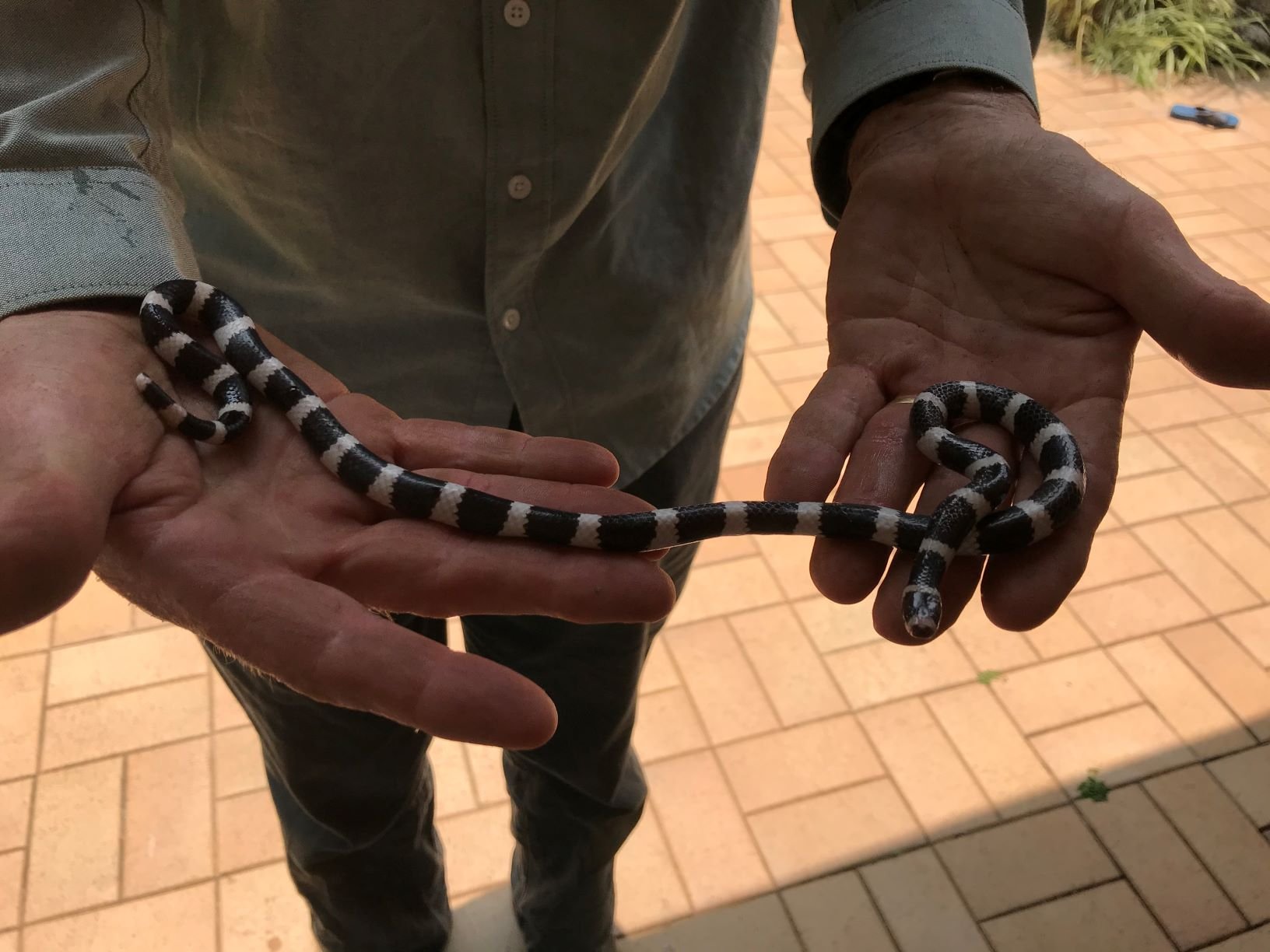eastern bandy-bandy (vermicella annulata)
Other Common Names: Common Bandy-bandy, Hoop Snake.
Toxicity: Venomous. The venom of this species is poorly known. One recorded bite resulted in moderately severe local symptoms (ref QLD Museum).
Description: The Eastern Bandy-bandy is the most widespread of six species of Bandy-bandys, found in all states except WA and Tasmania. They have smooth glossy scales with striking black and white rings that encircle the whole body. The tail is short with a blunt tip. The head is indistinct with small eyes.
When threatened, Eastern Bandy-bandys thrash from side to side. They may also throw their mid body into a threatening vertical hoop, giving rise to the name Hoop Snake. Being a nocturnal snake, by moving quickly in dim light, the bands create flicker fusion where the snake appears to be stationary when it is actually moving.
They are in the Elapid family of snakes. Despite being venomous, Eastern Bandy-bandys are very reluctant to bite and are not considered dangerous.
Eastern Bandy-bandys can grow up to 75 centimetres in length but most adults are around the 50cm mark.
General habits: Eastern Bandy-bandys are a nocturnal burrowing snake that is rarely encountered. They live in a wide range of habitats and vegetation types.
Diet: Feeds exclusively on Blind Snakes and can survive without food and water for extended periods.
Locally: Eastern Bandy-bandys are widespread throughout the Tweed but are generally only seen on rainy nights or when caught in the swimming pool skimmer box.
Reproduction: Eastern Bandy-bandys lay between 2 and 13 eggs each breeding season.
Glossy scales and a small head.
This snake rescued from a pool. Eastern Bandy-bandys are reluctant to bite if handled gently.



